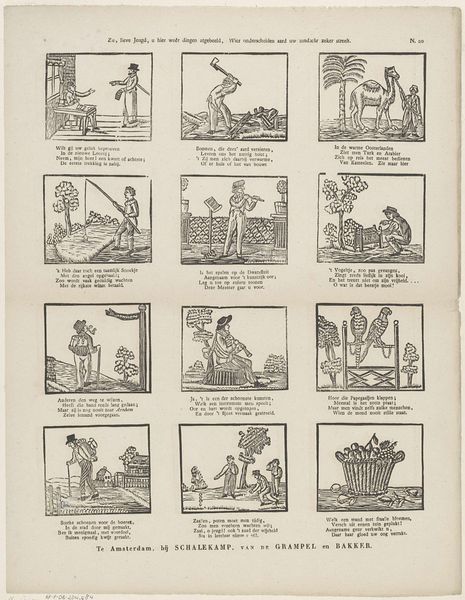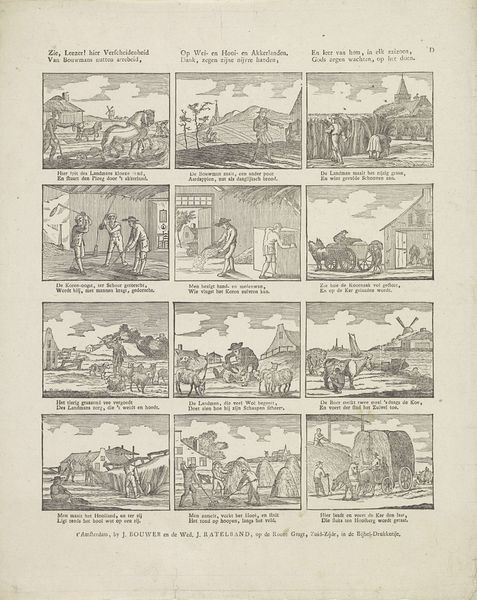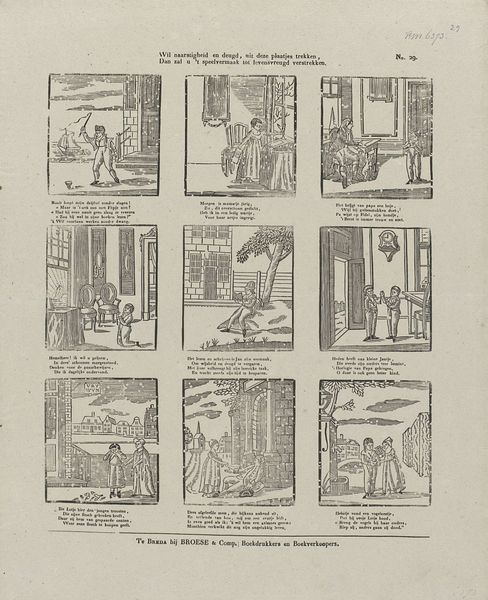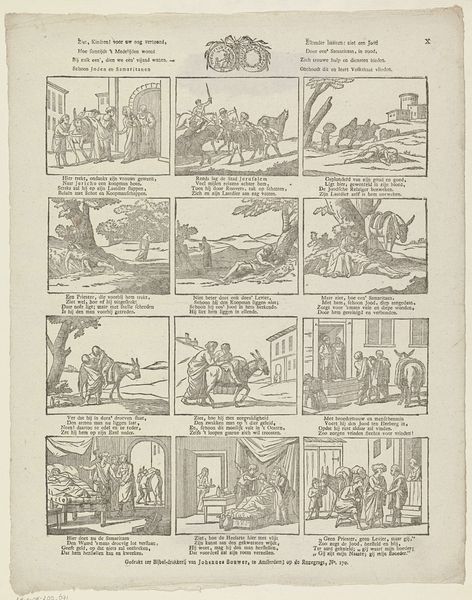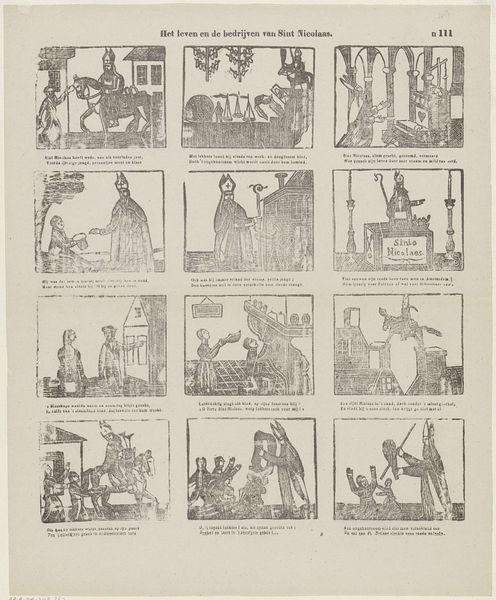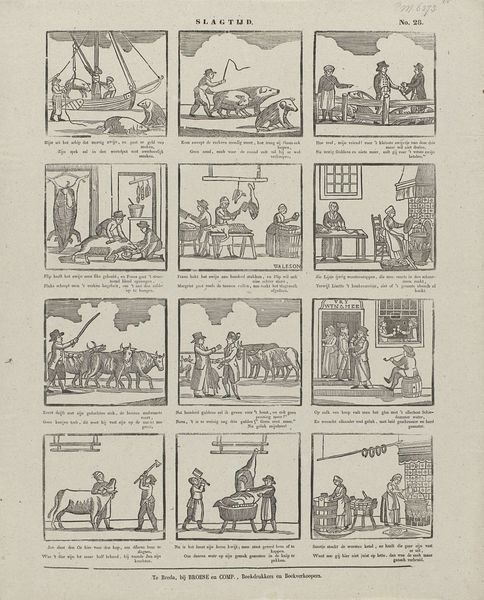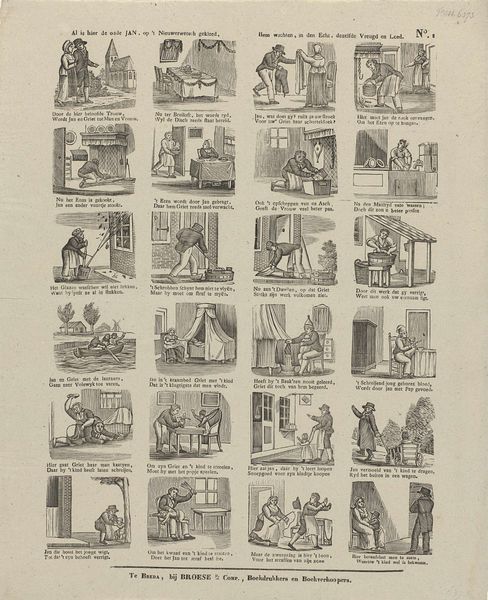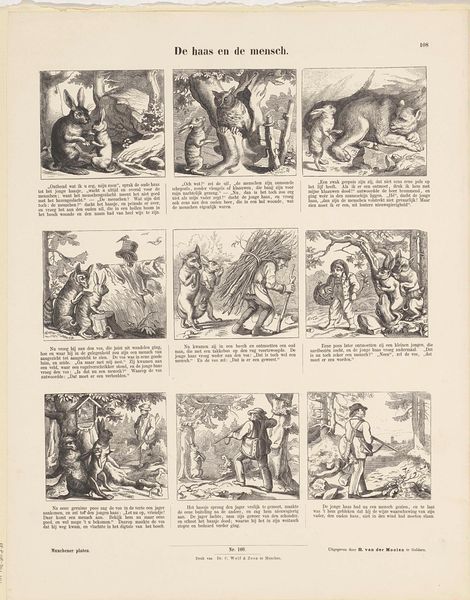
print, engraving
#
comic strip sketch
#
quirky sketch
#
narrative-art
# print
#
old engraving style
#
sketch book
#
landscape
#
personal sketchbook
#
idea generation sketch
#
sketchwork
#
folk-art
#
sketchbook drawing
#
genre-painting
#
storyboard and sketchbook work
#
academic-art
#
sketchbook art
#
engraving
Dimensions: height 420 mm, width 331 mm
Copyright: Rijks Museum: Open Domain
This print, made by Broese & Comp., presents an idealized vision of agrarian life. It’s executed in a humble medium: a simple lithograph, a process by which images are drawn on stone and then printed. The linear quality of the image is determined by the lithographic process, as is the even tonality. These qualities lend themselves to easy reproduction, which was certainly the intent. The image is broken into a grid of sixteen scenes; each depicts a stage in the yearly cycle of rural labour – sowing, harvesting, tending animals. While the scenes presented are ostensibly about labor, they gloss over the hard facts of it. Instead, the print serves as propaganda, intended to ennoble agricultural work. It testifies to a moment when industrialization was on the rise, and many felt a need to valorize a disappearing way of life. This seemingly modest print thus speaks volumes about the social and economic realities of its time.
Comments
No comments
Be the first to comment and join the conversation on the ultimate creative platform.

